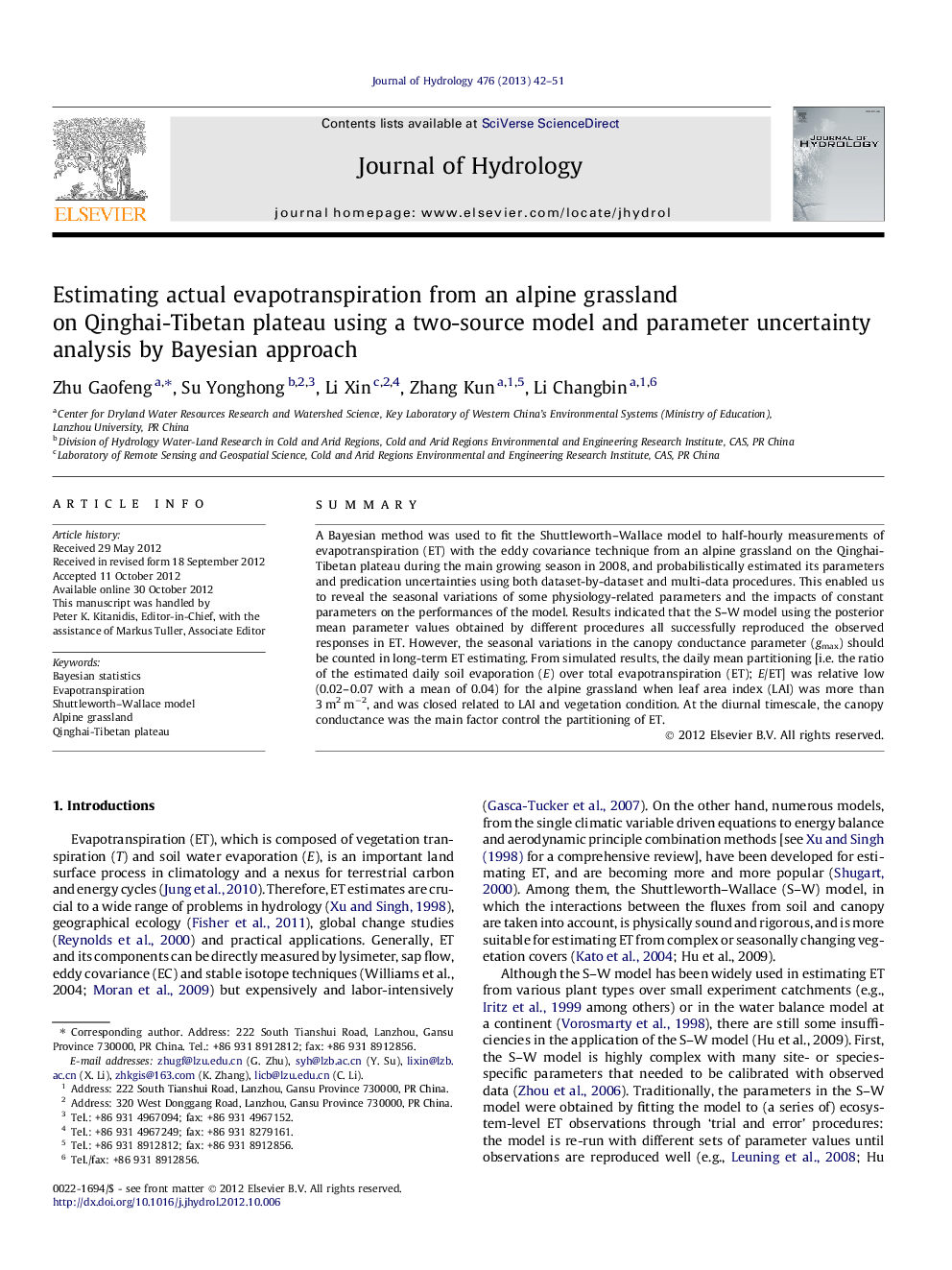| Article ID | Journal | Published Year | Pages | File Type |
|---|---|---|---|---|
| 4576596 | Journal of Hydrology | 2013 | 10 Pages |
SummaryA Bayesian method was used to fit the Shuttleworth–Wallace model to half-hourly measurements of evapotranspiration (ET) with the eddy covariance technique from an alpine grassland on the Qinghai-Tibetan plateau during the main growing season in 2008, and probabilistically estimated its parameters and predication uncertainties using both dataset-by-dataset and multi-data procedures. This enabled us to reveal the seasonal variations of some physiology-related parameters and the impacts of constant parameters on the performances of the model. Results indicated that the S–W model using the posterior mean parameter values obtained by different procedures all successfully reproduced the observed responses in ET. However, the seasonal variations in the canopy conductance parameter (gmax) should be counted in long-term ET estimating. From simulated results, the daily mean partitioning [i.e. the ratio of the estimated daily soil evaporation (E) over total evapotranspiration (ET); E/ET] was relative low (0.02–0.07 with a mean of 0.04) for the alpine grassland when leaf area index (LAI) was more than 3 m2 m−2, and was closed related to LAI and vegetation condition. At the diurnal timescale, the canopy conductance was the main factor control the partitioning of ET.
► The S–W model was calibrated using Bayesian approach for an alpine grassland. ► The seasonal fluctuation of parameters in the S–W model was identified. ► Seasonal variations of physiologic parameters have effects on ET estimates. ► The diurnal variation of E/ET was related to canopy conductance. ► The daily variation of E/ET was related to LAI and vegetation condition.
